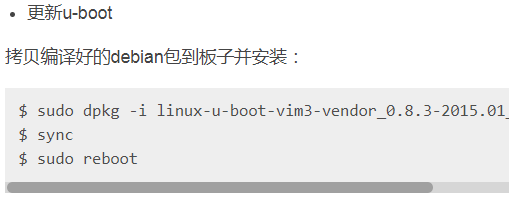

Different parts of the SoC device are hard-wired to appear at different parts of the memory map. How it works is that the processor on the SoC has a memory address range. U-Boot/Redboot act like sort of like the BIOS on the ARM system. There jobs on a ARM system are much more complicated then something like Grub2 does. All that stuff is completely uninitialized and non-configured.
#U boot x86 serial
There is nothing to detect or configure your RAM, or configure your serial ports, or ethernet ports, or compact flash controller, or harddrive controller or anything like that. So with no BIOS there is nothing to configure any of that. Everything is multipurpose since the SoC is designed to be used in the widest number of devices and configurations possible. They can usually multiplex as GPIO pins (so you can program them to send voltage signals to control devices or send signals to robot controllers or whatever) and also be maybe one of the pins for the memory controllers or for the ethernet controller or something like that. This SoC has pins on the back that are very multifunction.
#U boot x86 Bluetooth
Memory controllers, drive controlers, graphics controllers, often you have extra things like DSP processors or bluetooth support or whatever else is usually needed for your cell phone or other embedded-style ARM device. Instead what happens is that you have a "System On a Chip".Ī SoC is a like a processor in x86, except instead of just having the processor it has all the basic things built-in you need for a computer.

There is no 'Power On Self Test', no 'BIOS' or anything like that usually. (Linux does not need a BIOS, but it makes it much more complicated to setup if you don't) (in the future PCs will use EFI instead of a BIOS, but the basic concept is similar)įor a ARM-based embedded systems there is nothing like this. Without this you would not even be able to run some operating systems like Windows XP. All this hardware configuration and setup must be done before the system begins to execute your OS'es bootloader. The BIOS will initialize your motherboard, initialize your harddrive controller, detect the harddrive and the harddrive geometry, etc etc.
#U boot x86 Pc
The BIOS on the PC is responsible for getting your hardware initially detected and powering up everything so that your bootloader like Grub, Lilo, NTLDR, DOS stuff, or Syslinux can work.įor example you store the bootloader on the "Master Boot Record" of your harddrive. My goal is to reach a good setup to develop U-Boot and QEMU's early boot stuff.For ARM systems there are usually no 'BIOS' like there is for the PC. But that is kind of cheating since I want U-boot to do the hard work rather than cheat with QEMU. I couldn't find that automatically in Buildroot, but I could do it manually, here is one approach: Īnother approach would be to keep -kernel -append and let QEMU put the kernel into memory as done without U-Boot, and then use the booti U-Boot command I've found on help: booti - boot Linux kernel 'Image' format from memory So it appears that U-Boot cannot handle the VirtIO device? Or according to Peter, I have to create a partition table. TFTP from server 10.0.2.2 our IP address is 10.0.2.15ĭHCP client bound to address 10.0.2.15 (0 ms) In: virtio-net#31 using MAC address from ROM *** Warning - bad CRC, using default environment Now I do get the U-Boot shell, but boot fails and leaves me no the U-Boot prompt: U-Boot 2019.07 (13:34:10 +0100) output/host/usr/bin/qemu-system-aarch64 -M virt -cpu cortex-a57 -nographic -smp 1 -bios output/images/u-boot.bin -netdev user,id=eth0 -device virtio-net-device,netdev=eth0 -drive file=output/images/rootfs.ext4,if=none,format=raw,id=hd0 -device virtio-blk-device,drive=hd0 I tried as mentioned at: Can ARM qemu system emulator boot from card image without kernel param? to remove -kernel and -append and add -bios u-boot.bin. So there is a U-Boot binary there: u-boot.bin, but how do I use that with QEMU? Lrwxrwxrwx 1 ciro ciro 11 _13:36:25 rootfs.ext4 -> rootfs.ext2 output/host/usr/bin/qemu-system-aarch64 -M virt -cpu cortex-a57 -nographic -smp 1 -kernel output/images/Image -append "root=/dev/vda console=ttyAMA0" -netdev user,id=eth0 -device virtio-net-device,netdev=eth0 -drive file=output/images/rootfs.ext4,if=none,format=raw,id=hd0 -device virtio-blk-device,drive=hd0
#U boot x86 how to
Now, I can boot fine without U-Boot with the command line mentioned at: How to download the Torvalds Linux Kernel master, (re)compile it, and boot it with QEMU?.
#U boot x86 install


 0 kommentar(er)
0 kommentar(er)
